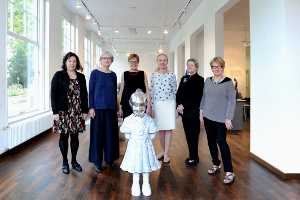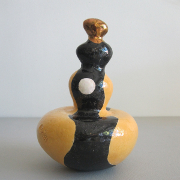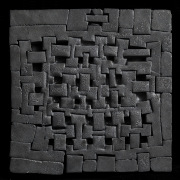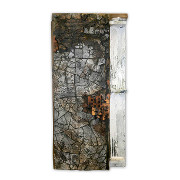special exhibition
|
|
|
|
"Finland Moves to Center Stage" |
|
|
|
|
The Finnish Ceramics Group Helsinki Fat Clay The Finnish Ceramics Group Helsinki Fat Clay Finnish ceramics – a narrative contemporary art form even when it is abstract. Its theme is loss, its attitude modern melancholy. Is it Finland? Or is it modernity...
Examples: With her elaborately decorated bowls, vases, mosaics and stoneware reliefs, Åsa Hellman awakens memories of a culture that never existed, one rich in opulent decoration and lustful ornamentation. The handled bowls and vessels made of stoneware created by Kati Tuominen-Niittylä are still symbols of a practical use and point to a period of domestic economic activity; nevertheless, with their authentic and delicate, rough engobed quality, they are also pure objects with a generous elegance of form transcending any practical purpose. The abstract glazed painted plaques and relief structure seen in the work of Heikki Rahikainen's, often snow-and-ice blue and white, resemble three-dimensional sections of landscapes in which any reference to actual objects is lost in their materiality. The large, almost completely closed, pleasingly rounded spherical vessels or curved block objects created by Erna Altonen's, coil-built and then fired to stoneware, with the fine movement and mat monochromatic structure evident on their surfaces, present themselves as lost planets or deserted cult buildings. The forms made by Johanna Rytkölä, frequently curved and entirely abstract, remain obstinately between sculptural drawing and built gestures and look like over-sized fancy details executed quickly to satisfy a giant's desire for ornamentation. Kirsi Kivivirta, in contrast, in her composite tile objects, reduces pictures of vessels or space to precise linear puzzle composites which first generate their schematic pictorial effect after the fact. And even where leafless treetops frame the emptiness in the center of the picture, the apparent heavenward gaze is still a secondary effect of the severed edge. With his structural wall sections, coarse images of material decay of great beauty, Pekka Paikkari allows us to literally feel the entire brittleness of built culture. Kristina Riska exhibits large vessel-like forms as perforated built objects which, precisely because they are the result of work and time, cannot conceal their fragility. Eliisa Isoniemi transfers drawings into multiple indirectness – symbols of incurable grief. She prints figural drawings as monotypes on clay; some of these are glazed, the melted glass covering the picture. In many senses the depicted motif is absent – was it ever . . .? Kim Simonsson has created porcelain figures of girls and animals, inspired by the world of manga comics, often presented in strange installation-like tableaus speaking nevertheless of isolation, have been transformed, in the crucible of arbitrary or violent activities, into scenarios like three-dimensional stills. And Caroline Slotte, finally, reworks vintage blue china plates by sanding off the patterns and kitsch designs until only individual details remain – as if the child’s sight, looking around on his plate and seeing only this single detail, has been turned around. But as time passed by this little motif lost its bright meaning: childhood is gone and will never return. |
|
|
opening: Sunday, October 5, 11:30 – 18:00 |
|
opening hours: Tue - Fri 11:00 - 13:00 & 14:00 - 18:00 |
|
|
exhibition site: Galerie Heller Tel: 06221 - 61 90 90 |
















